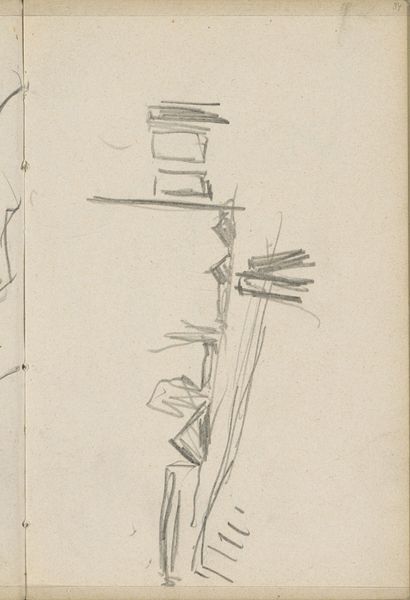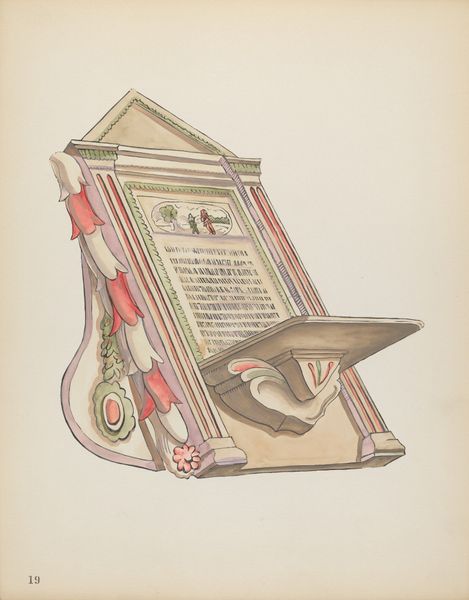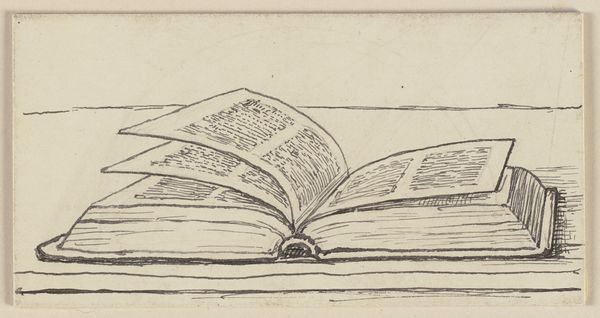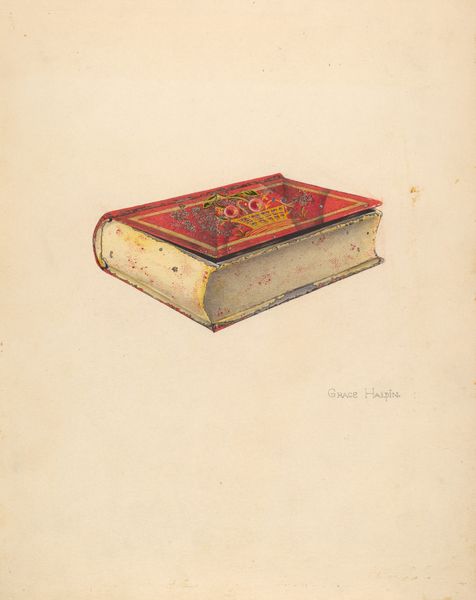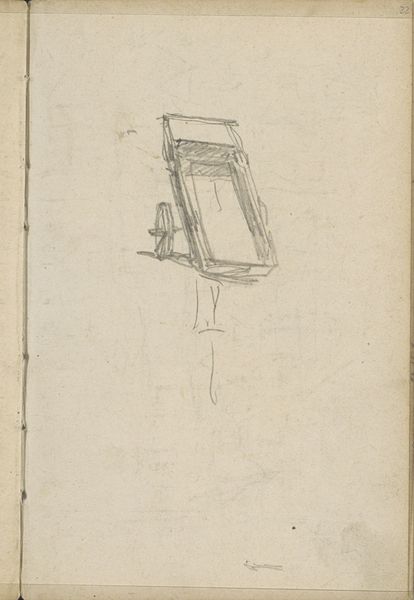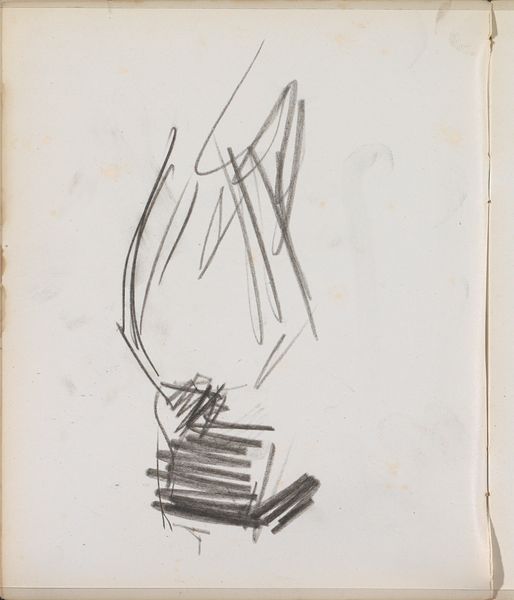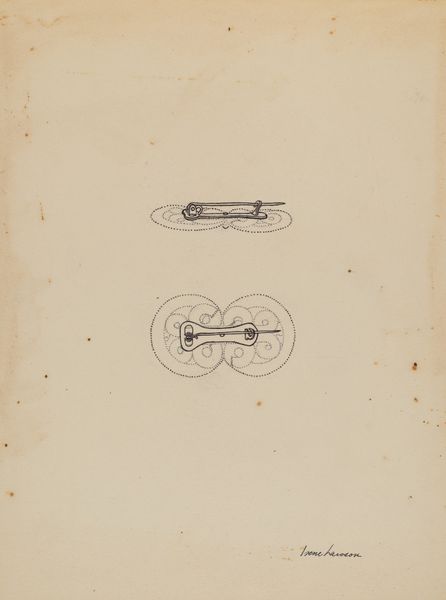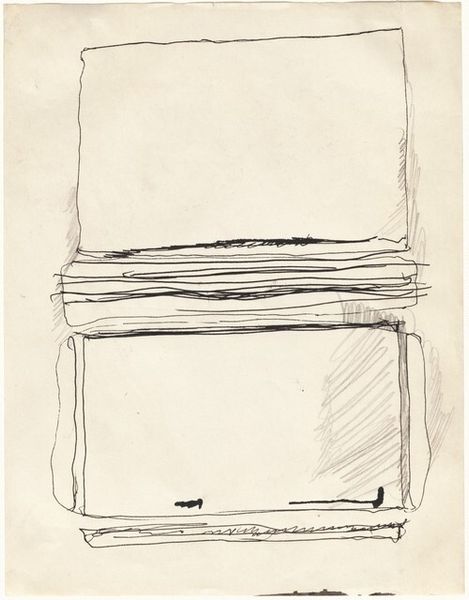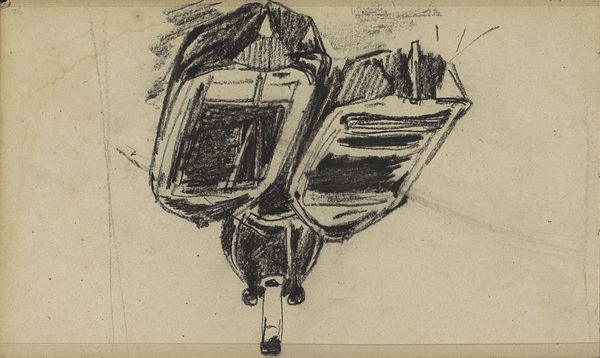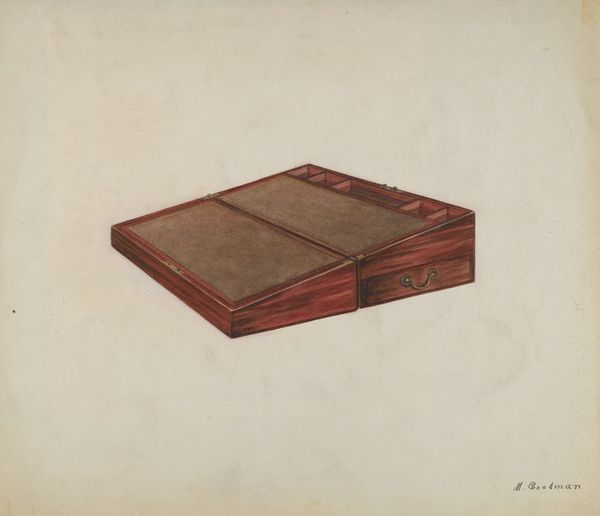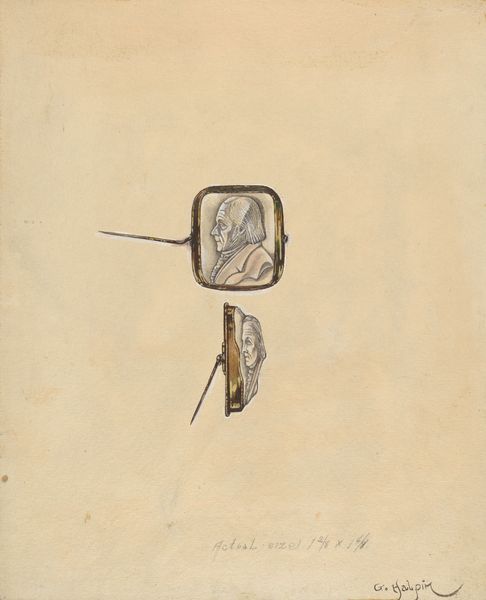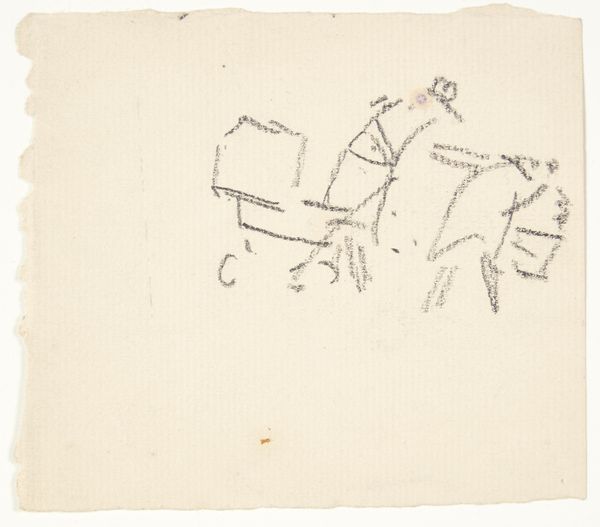
drawing, paper, pencil
#
drawing
#
paper
#
geometric
#
pencil
Dimensions: overall: 29 x 22.8 cm (11 7/16 x 9 in.)
Copyright: National Gallery of Art: CC0 1.0
Editor: So, this is Isidore Steinberg's "Purse," circa 1937, a pencil drawing on paper. It's deceptively simple, almost like an architectural sketch. What strikes you when you look at this object? Curator: The object, seemingly mundane, speaks volumes about the cultural anxieties of its time. The purse, historically a repository of personal wealth and secrets, rendered here with such austere lines, evokes a sense of fragility. Notice the accordion-like structure, almost skeletal; it reminds me of similar imagery representing hardship, especially during the Depression era. Does it suggest something about the contents it might hold – perhaps meager, carefully accounted for? Editor: That’s a compelling point. The purse as a symbol of vulnerability makes a lot of sense considering the period. But isn’t it also about the everyday? Maybe it’s simply a study of form? Curator: Precisely, the "everyday" is steeped in meaning! Even the simple geometric rendering speaks to broader themes. Steinberg might be alluding to the rise of industrial design or the shifting role of women in society. The purse, so central to a woman’s identity, is presented in a depersonalized, almost clinical way. Think about its symbolism – containment, protection, maybe even restriction. It really challenges us to consider how something so ordinary carries such potent cultural weight. What sort of memories or impressions come up for you? Editor: I guess I see now how an image, however simple, can be a container for cultural memory. I'm definitely going to be more aware of that in other artworks now. Curator: Absolutely, art serves as a kind of cultural mirror, reflecting back at us our collective hopes, fears, and values, sometimes in the most unassuming forms.
Comments
No comments
Be the first to comment and join the conversation on the ultimate creative platform.

